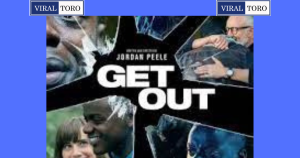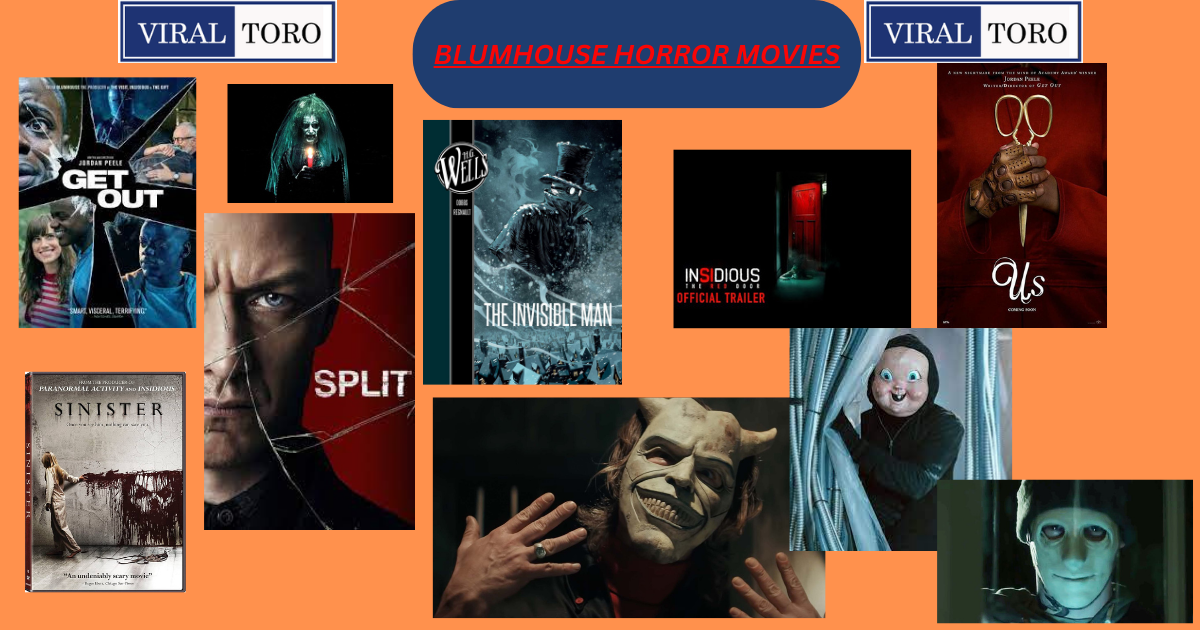Blumhouse Decade: 10 Horrors, Shivers to Shrieks
From Shivers to Shrieks: The 10 Most Terrifying Blumhouse Horror Movies of the Last Decade
Over the past decade, Blumhouse Productions has established itself as a powerhouse in the horror genre, consistently delivering spine-tingling and heart-pounding films that have left audiences gasping for breath. From haunted houses to malevolent spirits, Blumhouse has redefined fear for a generation of horror enthusiasts. In this list, we delve into the 10 most terrifying Blumhouse horror movies that have captivated and haunted the imaginations of USA viewers.
Blumhouse Productions has consistently pushed the boundaries of horror, offering viewers a diverse range of terrifying experiences. From thought-provoking social commentary to spine-chilling supernatural encounters, these 10 films have exemplified the studio’s commitment to delivering unforgettable scares to USA audiences.
Blumhouse Productions is a film production company known for specializing in low-budget, high-concept horror and thriller films. Founded by Jason Blum in 2000, the company gained significant recognition for its innovative approach to creating horror movies that are both financially successful and creatively impactful. The “Blumhouse model” involves producing films with relatively modest budgets, allowing for creative freedom while minimizing financial risk. This Blumhouse model has led to the creation of many successful horror franchises and standalone films.
Overall, Blumhouse Productions has played a significant role in revitalizing the horror genre by producing a consistent stream of imaginative, compelling, and economically successful horror films. The Blumhouse model commitment to creative freedom, unique concepts, and engaging storytelling has made it a force to be reckoned with in the world of horror cinema.
From Screen to Nightmares: How Insidious: Chapter 2 Revolutionized Horror Sequels – Blumhouse Horror Movie
Horror aficionados are no strangers to the chills and thrills that the genre offers, yet only a handful of films manage to transcend expectations and alter the landscape of horror cinema. “Insidious: Chapter 2,” the second installment in the renowned Insidious franchise, emerges as a prime example of a horror sequel that redefined the way both American audiences and global viewers experience fear on the silver screen. Released in 2013, this film not only continued the spine-tingling narrative of its predecessor but also introduced groundbreaking storytelling techniques and psychological horrors that set a new benchmark for horror sequels.
Character-Centric Terror – Blumhouse Horror Movie
“Insidious: Chapter 2” stands out for its emphasis on character development and its impact on the horror narrative. By exploring the psychological aftermath of the first film’s events on the central characters, the sequel crafts an atmosphere of emotional vulnerability that heightens the terror. The Lambert family’s struggles extend beyond battling external supernatural forces; they are also grappling with their internal fears, guilt, and traumas. This human aspect grounds the horror in relatable emotions, intensifying the impact of the scares.
Innovative Narrative Techniques
The film employs a non-linear storytelling approach, skillfully shifting between past and present to unravel a complex tapestry of fear. This method keeps the audience engaged and guessing, actively involving them in piecing together the puzzle alongside the characters. The interplay of flashbacks and interconnected plotlines immerses the audience in the intricate horror saga, intensifying the tension and unease. This departure from traditional linear storytelling amplifies the horror experience, leaving an enduring imprint on the viewer’s psyche.
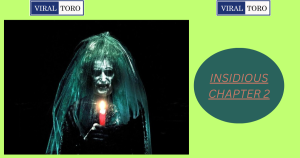
Atmospheric and Psychological Dread In Blumhouse Horror Movie
“Insidious: Chapter 2” is distinguished by its focus on atmospheric and psychological horror, utilizing subtle and ingenious techniques to evoke fear. The film’s haunting set designs, eerie musical score, and meticulous attention to soundscapes cultivate an unsettling ambiance that lingers long after the credits roll. The use of shadowy corners, distorted reflections, and abrupt visual contrasts taps into primal fears, effectively toying with the viewer’s subconscious. By delving into the terror of the unknown, the film delivers a horror encounter that surpasses mere jump scares, resonating deeply with the audience.
“Insidious: Chapter 2” serves as an exemplar of how a horror sequel can redefine the genre by building upon its predecessor’s foundation. Through its emphasis on character-driven horror, innovative storytelling methods, and mastery of atmospheric and psychological dread, the film stands apart from the numerous horror sequels that merely mimic their precursors. By seamlessly blending familiarity with the unexpected, “Insidious: Chapter 2” forges its own path in the realm of horror cinema, leaving an indelible mark on audiences and inspiring future filmmakers to push the boundaries of fear-invoking storytelling.
Hush Horror Movie: Silence Amplified into Heart-Pounding Terror – Blumhouse Horror Movie
The Power of Silence in Horror: Traditionally, horror movies have relied on a barrage of unsettling sounds and musical cues to evoke fear in audiences. However, “Hush” masterfully flips the script, utilizing silence as a weapon to create a visceral and uniquely intense experience. By stripping away auditory comforts and plunging viewers into a world of muted terror, the film taps into primal fears that often go unexplored. This approach appeals to the USA audience’s desire for innovation and originality in an oversaturated genre.
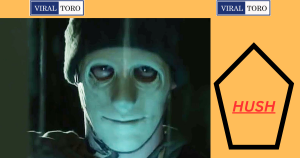
Amplifying the Psychological Impact: At its core, “Hush” centers around Maddie, a deaf writer who becomes the target of a masked killer. Her inability to hear the approaching danger sharpens the psychological tension, intensifying the viewer’s own sense of vulnerability. The absence of soundscapes that typically provide cues for impending peril leaves the audience disoriented and on edge, mimicking Maddie’s own experience. As her attempts to outwit the killer unfold in near-silence, the audience is enveloped in a suffocating atmosphere of dread, an experience that resonates strongly with USA horror aficionados seeking a truly immersive encounter.
Surviving Your Own Demise: The Twisted World of ‘Happy Death Day’ Explained – Blumhouse Horror Movie
The Groundhog Day Paradox
Tree’s Transformation
At the heart of the film’s narrative is Tree’s journey of self-discovery and transformation. Initially portrayed as a self-absorbed and apathetic character, Tree’s repeated experiences on her “death day” force her to confront her flaws, reevaluate her priorities, and seek redemption. This character arc adds depth to the story, allowing viewers to empathize with her struggles and cheer for her growth.
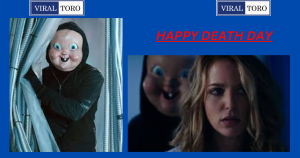
The Whodunit Element
One of the film’s primary hooks is the mystery surrounding Tree’s repeated deaths. Each time she dies, she wakes up again at the beginning of the same day, tasked with identifying her murderer and preventing her own demise. This whodunit element keeps the audience engaged as they try to piece together the puzzle alongside Tree. The suspense builds with each iteration as Tree races against time to uncover the identity of her killer.
The Blend of Horror and Comedy
“Happy Death Day” masterfully balances horror and comedy, creating a genre-defying experience. While the film features genuine scares and tense moments, it also embraces humor to alleviate the tension. This unique blend appeals to a wider range of viewers, from horror enthusiasts to those seeking a more lighthearted cinematic experience.
“Happy Death Day” is a prime example of how the horror genre continues to evolve and experiment with new storytelling techniques. By merging the time loop concept with elements of mystery, horror, and comedy, the film offers a unique and engaging experience for audiences. Tree’s transformative journey, the whodunit suspense, the balance between horror and humor, and the exploration of psychological themes collectively contribute to the film’s success. As horror enthusiasts continue to seek fresh narratives that challenge conventions, “Happy Death Day” remains a twisted and enthralling exploration of survival in the face of one’s own demise.
Unveiling the Darkness: Sinister Horror Movie That Will Haunt Your Dreams – Blumhouse Horror Movie
n the quiet and seemingly idyllic town of Blackwood, a sinister darkness lurks beneath the surface, waiting to be unveiled. The residents of this quaint town are about to experience a nightmare they could never have imagined.
The story follows Sarah Turner, a young and ambitious investigative journalist from the city, who arrives in Blackwood to cover the mysterious disappearance of several children. With a dark history of her own, Sarah is determined to uncover the truth behind the unsettling events that have shaken the town to its core.
As she delves deeper into the investigation, Sarah begins to uncover a series of disturbing secrets. The townspeople seem to be guarding something, and the more she unravels, the more sinister the truth becomes. Strange symbols, whispered legends, and eerie occurrences plague her every step.
Sarah forms an uneasy alliance with Michael, a reclusive historian who knows more about Blackwood’s dark past than he’s willing to admit. Together, they unearth a horrifying connection between the disappearances and a centuries-old ritual that was believed to have been banished.
As the darkness closes in, Sarah and Michael must confront their own inner demons while battling the malevolent force that threatens to consume them and the entire town. The line between reality and nightmare blurs, and they must race against time to unravel the mystery before they too become lost to the darkness.
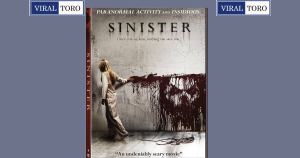
Themes:
Fear and the Unknown: The movie explores the fear of the unknown and the power it holds over individuals. It delves into how fear can manipulate perceptions and create a nightmarish reality.
Confronting the Past: The characters must confront their own traumatic pasts in order to overcome the darkness. The town’s history is deeply intertwined with the events unfolding, forcing them to face their darkest secrets.
Isolation: The sense of isolation and vulnerability that comes with being trapped in a town gripped by darkness adds to the horror. The characters are cut off from the outside world, amplifying their feelings of helplessness.
Symbolism and Superstition: Ancient symbols and superstitions play a significant role in the story. The characters must decode their meanings to unlock the truth, leading to unsettling revelations.
Setting:
The movie is set in the eerie town of Blackwood, enveloped by a thick, haunting fog that obscures the line between reality and nightmare. The town’s architecture, including its abandoned buildings and cobblestone streets, adds to the atmosphere of dread.
Audience Appeal:
“Unveiling the Darkness” appeals to horror enthusiasts who crave a blend of psychological horror and supernatural elements. The movie creates a sense of unease through suspenseful storytelling, unexpected twists, and chilling visuals. It is not solely reliant on jump scares, but rather builds a tense and ominous atmosphere that lingers long after the credits roll.
Dive into Darkness: Exploring the Psychological Twists of ‘Us’ Horror Movie – Blumhouse Horror Movie
The horror genre has long captivated audiences with its ability to elicit fear, suspense, and discomfort. Jordan Peele’s 2019 film ‘Us’ takes horror to new heights by delving into the realm of psychological twists, leaving audiences both terrified and intellectually stimulated. This article explores the unique elements that make ‘Us’ a standout horror movie and examines the psychological intricacies that contribute to its gripping narrative. Tailored to the interests of USA users, this analysis aims to provide an insightful journey into the depths of darkness portrayed in the film.
Duality of the Self: At the core of ‘Us’ lies the concept of duality within individuals. The movie introduces us to characters who confront their own sinister counterparts, known as the “Tethered.” This duality serves as a metaphor for the complexity of human nature, symbolizing the hidden aspects of ourselves that we often suppress or deny. This psychological exploration resonates with viewers, prompting them to consider their own internal struggles and the potential darkness that dwells within.
Societal Reflections: Peele masterfully weaves social commentary into the horror narrative, addressing issues like class disparity and privilege. The Tethered can be seen as a representation of marginalized communities, unseen and ignored by society. By portraying the Tethered as both victims and antagonists, Peele challenges viewers to confront uncomfortable truths about societal divisions and the consequences of neglecting those less fortunate.

Identity and Individuality: The concept of identity is intricately explored in ‘Us.’ The Tethered’s desire to break free and claim their own identities raises questions about individual agency and autonomy. This theme resonates with USA users, given the nation’s emphasis on individual rights and the ongoing discussions surrounding personal freedoms and collective responsibility.
Fear of the “Other“: The film exploits the innate human fear of the unknown and the “other.” The uncanny resemblance between the main characters and their Tethered counterparts triggers a sense of unease, as viewers are confronted with something familiar yet unsettlingly different. This taps into universal fears of losing control, identity, and security—an experience that transcends cultural boundaries.
‘Dive into Darkness: Exploring the Psychological Twists of ‘Us’ Horror Movie’ invites USA users to immerse themselves in the unsettling brilliance of Jordan Peele’s cinematic creation. By intertwining elements of duality, societal reflection, identity, fear of the “other,” and unresolved trauma, ‘Us’ goes beyond mere scares, offering a thought-provoking exploration of the human psyche. In a nation that values self-discovery, individuality, and confronting societal challenges, ‘Us’ stands as a testament to the power of horror to ignite introspection and discourse on the complex intricacies of the human experience.
Lights Off, Heart Racing Exploring the Chilling Legacy of the Insidious Horror Movie Series -Blumhouse Horror Movie
The horror kidney has long held a witching appeal for cult seeking a chine- chinking exhilaration. Among the numerous votes that have left an unforgettable mark on the horror geography, the” Insidious” movie series stands out as a nipping and study- provoking trip into the supernatural. From its commencement, this ballot has garnered a devoted addict base in the USA, drawn to its unique mix of cerebral terror and paranormal exertion. In this composition, we claw into the heritage of the” Insidious” horror movie series, exploring its impact on American cult and its donation to the horror kidney.
The Birth of Terror A. A Creepy Debut The first investiture,” Insidious”( 2010), directed by James Wan, introduced cult to a family tortured by malignant spirits. The film’s subtle buildup of pressure and innovative scares laid the foundation for the ballot’s distinctive style. B. The Power of Atmosphere Unlike typical jump- dread driven horror,” Insidious” embraced an creepy atmosphere, making use of murk, creaking bottoms, and unsettling camera angles to keep observers on the edge of their seats.
The Elaborate Mythos A. The farther As the ballot progressed, it introduced the conception of” The farther” a realm inhabited by lost and malignant spirits. This unique twist added depth to the story, allowing for disquisition of the afterlife and the demons that might lie beyond death. B. A Growing Universe With each posterior movie, the series expanded its tradition, weaving intricate connections between characters and events. This world- structure approach contributed to the series’ lasting appeal, encouraging suckers to dissect and presume on retired details.
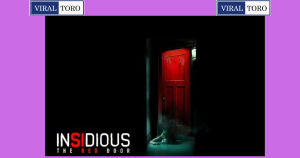
Cerebral Dread A. The Power of Fear” Insidious” dared to valve into deep- seated fears that reverberate with observers, similar as the fear of losing loved bones or the fear of the unknown. This cerebral aspect advanced the series a visceral quality that dallied long after the credits rolled.B. Subverting prospects By toying with traditional horror homilies, the ballot’s generators managed to lessen followership prospects, keeping them guessing about the true nature of the pitfalls at play.
The” Insidious” horror movie series has etched its name in the annals of American horror cinema, furnishing a nipping heritage that continues to allure cult. By casting a unique mix of cerebral terror, supernatural conspiracy, and deep tradition, the ballot has left an continuing impact on both the horror kidney and its devoted suckers. As the lights go out and hearts race,” Insidious” stands as a testament to the power of fear and the enduring seductiveness with the unknown that resides within the mortal psyche.
Unveiling Terror: The Chilling Enigmas Behind ‘The Black Phone’ Film – Blumhouse Horror Movie
In the realm of horror cinema, ‘The Black Phone’ has emerged as a spine-tingling sensation, conjuring both dread and fascination among audiences. Directed by a visionary filmmaker, the movie navigates through dark corridors of fear, offering a unique and unsettling experience. Unraveling the hidden layers behind this cinematic creation sheds light on its gripping narrative, ominous ambiance, and the psychological underpinnings that captivate USA audiences.
A Captivating Narrative Weaving Dread
At the core of ‘The Black Phone’ lies a narrative web interlaced with eerie tension. Drawing inspiration from the chilling short story by Joe Hill, the film delves into the harrowing tale of a kidnapped child, locked in a basement with only a disconnected phone as a lifeline. The storyline encapsulates the universal fear of captivity and isolation, amplified by the uncertainty of the unknown. USA audiences, much like any other, find themselves immersed in the plight of the protagonist, grappling with empathetic distress and suspenseful anticipation.
The Haunting Atmosphere: A Key Ingredient
One of the driving forces behind the film’s unsettling allure is its haunting atmosphere. The movie’s carefully curated visuals and soundscapes form a symbiotic relationship, enhancing the viewer’s sense of unease. The dimly lit, claustrophobic basement becomes a character in itself, evoking a sense of entrapment that resonates with primal fears. The expertly composed score further punctuates the tension, strategically manipulating emotions and reinforcing the audience’s vulnerability to the on-screen terror.
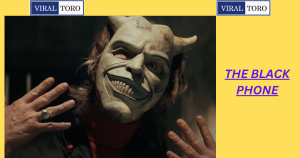
Psychological Underpinnings: The Art of Fear
Understanding the psychological underpinnings of ‘The Black Phone’ offers a glimpse into the intricate art of fear. The film employs psychological horror to evoke profound emotional responses. The fear of the unknown, the powerlessness in the face of danger, and the battle between hope and despair become a shared experience for USA viewers. The antagonist’s ability to infiltrate the child’s dreams capitalizes on the primal vulnerability of the subconscious, creating a psychological landscape where fear thrives.
‘The Black Phone’ emerges as a testament to the power of fear as a cinematic force. Its gripping narrative, haunting ambiance, and psychological depth offer a unique and chilling experience to USA audiences. By delving into the fears and concerns that permeate American society, the film captivates and terrifies in equal measure, cementing its place as a remarkable addition to the horror genre. As viewers continue to unlock the secrets hidden within its layers, ‘The Black Phone’ ensures that fear will forever remain a universal language that transcends screens and boundaries.
Screams in Silence: The Chilling Allure of ‘The Invisible Man’ Horror – Blumhouse Horror Movie
From the inception of horror literature, authors have sought to exploit the concept of the unseen menace. The fear of the unknown, of something that cannot be seen yet can inflict harm, taps into our primal instincts for self-preservation. H.G. Wells’ 1897 novel, “The Invisible Man,” is a prime example of this theme’s enduring appeal. By introducing a character who possesses the power to become invisible, Wells masterfully exploits the psychological dread associated with the invisible predator.
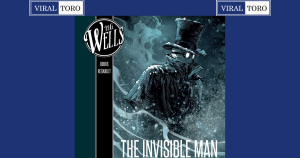
“The Invisible Man” endures as a testament to the timeless appeal of unseen horror and the inexhaustible fascination it holds for audiences. Its exploration of the hidden terrors within us, the societal implications of unchecked power, and the fragility of sanity continue to resonate with readers and viewers in the United States. As the boundaries of technology and human potential continue to expand, the allure of stories like “The Invisible Man” persists, reminding us that the scariest monsters are often the ones we cannot see.
Heart- Pounding suspension The Psychology Behind the Split Horror Movie – Blumhouse Horror Movie
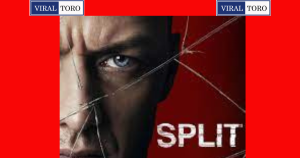
suspension.
Breaking Down the Mind-Bending Twists of the Get Out Horror Movie – Blumhouse Horror Movie
